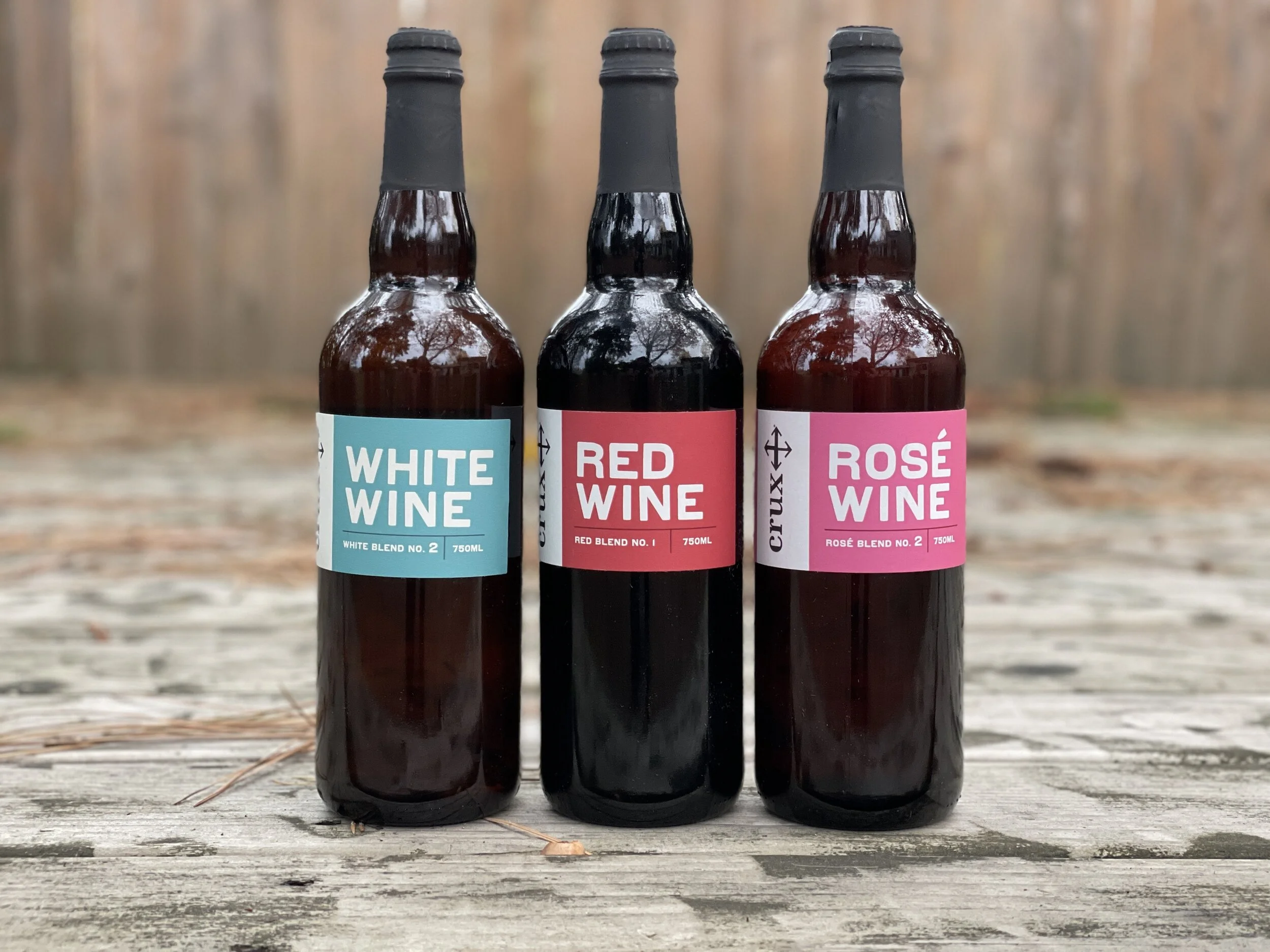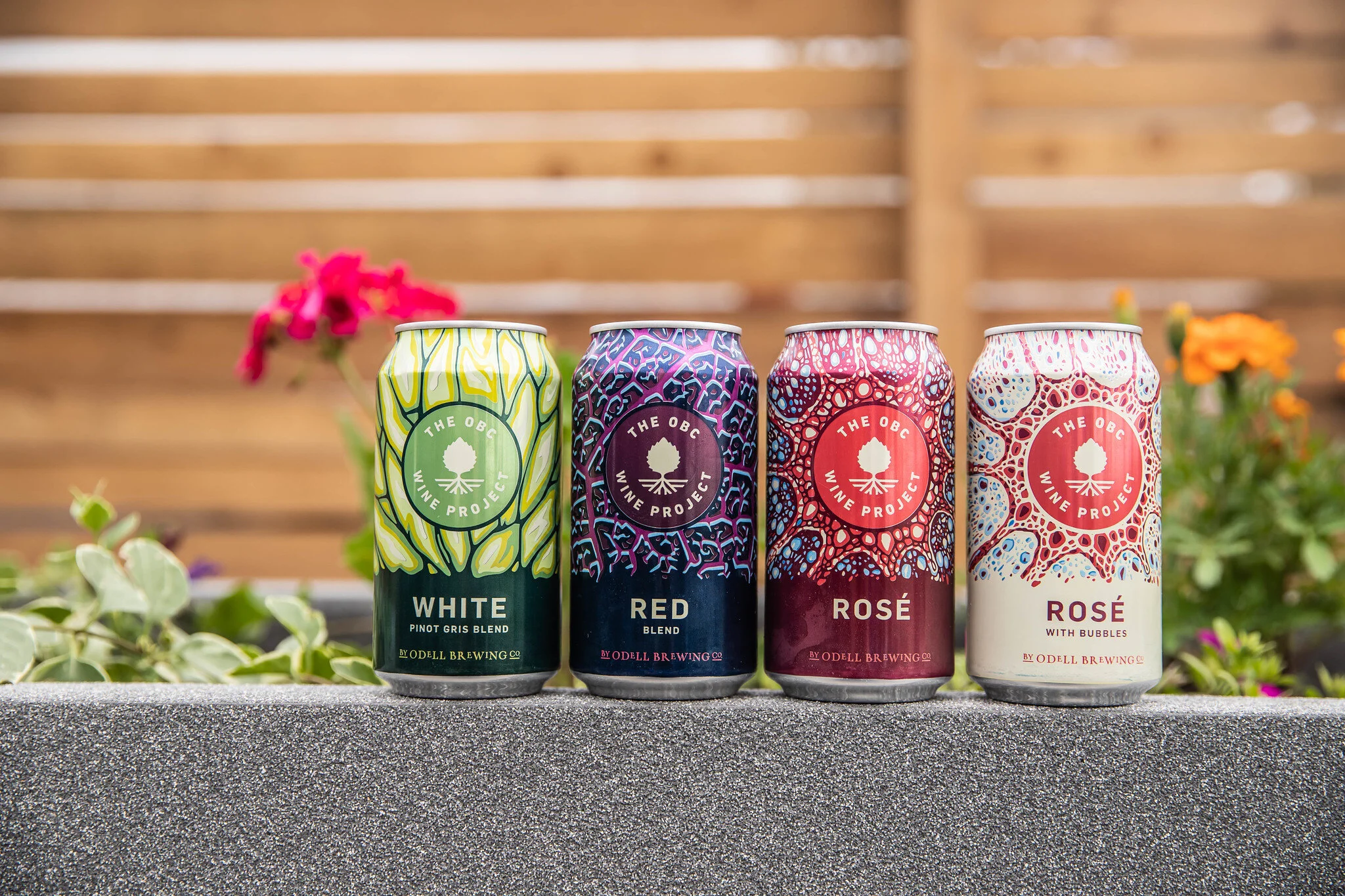It took a lot of great beer for these breweries to make great wine
As many breweries have leaned into the childification of beer in recent years through candy-soaked pastry stouts and pulp-laden smoothie beers (not to mention hard seltzer), others have been pushing towards a higher level of sophistication through wild ales and more traditional styles. The movement towards more adult styles has been refreshing to those looking to avoid taking a trip into sweet and silly nostalgia. Now, a handful of breweries are taking this idea a step further as they devote more resources and passion to making wine. The reasons for this vary and there certainly isn’t a correlation that would suggest making wine is a direct reaction to childification, but there is a sense that many breweries can try new things and their customers will embrace it. With breweries that make wine popping up around the country, one can’t help but speculate if this is part of a larger trend that may reflect an increasingly diverse customer base venturing into tap rooms.
Talk to different brewers and you’ll hear different stories of how they got into winemaking. For de Garde Brewing’s Trevor and Linsey Rogers, making wine was a natural evolution that grew out of passion and accessability. Since launching in 2013, the Tillamook, Oregon brewery has been using wine grapes in their spontaneously fermented wild ales. Many of these beers tend to be a sort of wine-beer hybrid, a style that has since become popular. Accumulated knowledge of working with grapes combined with their obsession with how a sense of place impacts flavors – terroir – and eventually it seemed like a natural evolution to make wine.
De Garde Brewing’s Trevor Rogers pours one of their housemade wines.
“We’re wine fans first and foremost. It’s similar to why we make beer the way we do, because it’s a unique expression of a specific location. The best wines are the same way - they represent a location very truly and it couldn’t be the same from a handful of miles in each direction,” says de Garde’s Trevor Rogers. “We already poured wine in our taproom and it’s not like we were wanting from that, but [we wanted to] try and make something phenomenal of our own construction. It’s an added benefit but really we just wanted to make good wine.”
This year, de Garde has introduced two wines, 'Rose No. 1' and the fabulous 2018 vintage ‘Rouge No. 1’ made with a blend of just over fifty percent Mourvèdre, with the balance being an equal blend of Grenache and Syrah. Both of these wines were made with grapes from 'The Rocks District of Milton-Freewater AVA on the Oregon side of the Washington border, a truly unique growing area that captured Rogers’ obsession to the point where knew he had to make a wine using its grapes (more on that later).
Crux Fermentation Project wine lineup
Bend, Oregon’s Crux Fermentation Project has also recently unveiled a handful of different wine offerings including a white wine blend, a slightly carbonated Rosé, and a red wine. For founder and brewmaster Larry Sidor, making wine was the fulfillment of a dream five decades in the making that also happens to fit into the whole “Fermentation Project” part of Crux’s name.
“About fifty years ago, I worked for the enology professor at Oregon State University. After graduation, I tried to start my own winery in Oregon. It would have been the third or fourth winery in the state of Oregon at the time. I failed to raise the money to start it,” says Sidor. “After twenty-three years at Olympia Brewing, I moved to Yakima where I purchased a ten-acre vineyard. I grew wine grapes for other wineries and made wine for family consumption.”
Odell Brewing’s OBC Wine Project lineup of canned wines
One of the larger wine endeavors in the country is at Odell Brewing in Colorado, where the Fort Collins-based brewery launched the The OBC Wine Project in 2020.
“Back in 2017, one of our co-workers in the maintenance department suggested we transform a storage building at the edge of the brewery property into a winery. We started discussions from there and launched with four canned wines - Rosé, Red Blend, Rosé Bubbles and Pinot Gris in 2020,” says Odell’s Marketing Project Manager Jessica Hawkins.
Since launching, The OBC Wine Project has expanded to include Pinot Noir, Chardonnay, and even a white wine spritzer, and customers can buy wine in bottles and cans.
The ability of a brewery to make wine depends heavily on its access to grapes. Sourcing grapes to make wine isn’t always easy and it pays to have connections. At de Garde, Trevor has been cultivating these relationships for years.
“Honestly, some of our grape relationships have really developed because they were interested to see what we would do with their fruit in our beer,” says Rogers. “We have had great vineyard and winery connections. We had contracts for fruit before we ever had big hop contracts.”
Ever the perfectionist, Rogers encountered challenges in sourcing fruit from The Rocks District, one of Oregon’s newest American Viticultural Areas (AVA), but was ultimately successful through his own grit, determination, and luck.
“While we have the absolute best pinot noir from the Willamette Valley that’s going into some of our beer, we wanted to focus with our wine on The Rocks District of Milton-Freewater, which to my palate has some of the most intensely unique expressions of any grapes in the country and possibly the world. It’s a tiny little AVA and there’s just not a lot of acreage. Most of that is claimed because people want the damn fruit. We’ve tried really hard to develop relationships out there and continue sourcing more fruit through persistent effort, probably to the point of annoyance for some people, as well some stupid luck,” he says.
Larry Sidor at Crux found procurement easy due to his connections to the Oregon and Washington wine industry, sourcing grapes from the Columbia Valley.
Though they do source grapes in Colorado, Odell sources the majority of their grapes from the Pacific Northwest, including Columbia Valley AVA and Willamette Valley AVA, and they plan to continue exploring other regions. Interestingly, some of their sourcing came via their hop farm connections. Their Pinot Gris comes from Goschie Farms in Oregon - where Odell Brewing also sources its hops.
Many breweries do serve wine in their taprooms, however, the offerings are often lackluster. This raises the question of whether the decision to make wine is driven by marketing or simply a desire to elevate the brewery’s offerings. De Garde always tried to be thoughtful in their wine selection and their goal is to have their wine appeal to those who prefer not to drink beer as well as a crossover audience of beer/wine lovers.
De Garde Rouge No. 1 wine
“There’s a little bit of crossover in our audience for sure and I think that’s true of wild beer drinkers in general. You have a greater percentage of them that are wine aficionados versus regular beer drinkers. A lot of that is similar palate. Our beer has a similar pH to old world style wines and more so than it does to the average beer,” says Rogers, who points out that “feedback has been mostly positive so far” on de Garde’s wines and especially the ‘Rouge No. 1,’ which he thinks will “be singing in 3-5 years, but [he] quite enjoys it now.”
Crux’s Sidor points to a combination of wanting to please all kinds of drinkers while also wanting to make respectable wine. “I would say we currently have a very serious red blend, a fun Syrah Rosé, and an exploratory white blend. This is very similar to our brewing philosophy, that being, if a customer can't find something they really like at Crux, we have failed.”
Similarly, at Odell they hope to make their Fort Collins facility more dynamic and ultimately enjoyable for all customers. “Part of the wine project's ethos is to include the entire community at the Odell patio in Fort Collins. Until recently, we've only served beer, which does exclude folks who can't consume gluten or just prefer wines. Now guests can enjoy both beer and wine on our shared patios. Plus, being an urban winery allows us to experiment with different regions, grapes and techniques that other wineries can't - which means we have a little something for everyone,” says Hawkins.
So what does the future hold for the winemaking endeavors of these breweries? De Garde and Crux have no plans to expand but do intend to continue making their wine available for purchase in their taprooms. Rogers sees the output capping at a few thousand bottles per year, a number he attributes to the brewery’s storage capability and the labor investment of his staff since making wine tends to be more labor-intensive than brewing beer.
“We want to be hands on and we want to oversee the maturation and oak. There is a symbiosis to this,” says Rogers.
Odell’s wines are currently distributed in Colorado, Arizona, Montana, Minnesota and Wyoming, and they plan to release new packaged wines each season plus experimental projects on draft at their OBC Project winery only as they are not allowed to serve it per Colorado law at their other brewing locations.
Crux, de Garde and Odell are hardly the only breweries to try their hand winemaking. In recent years, breweries across America such as Jester King in Texas, Tired Hands in Pennsylvania, and Block 15 in Oregon have all rolled out wine and there are surely others. All of these have been met with excitement from customers looking to expand their palates and try something other than the latest pastry stout or smoothie beer. It is difficult to point to any larger trend towards winemaking at breweries at this point, but there is definitely momentum brewing.







